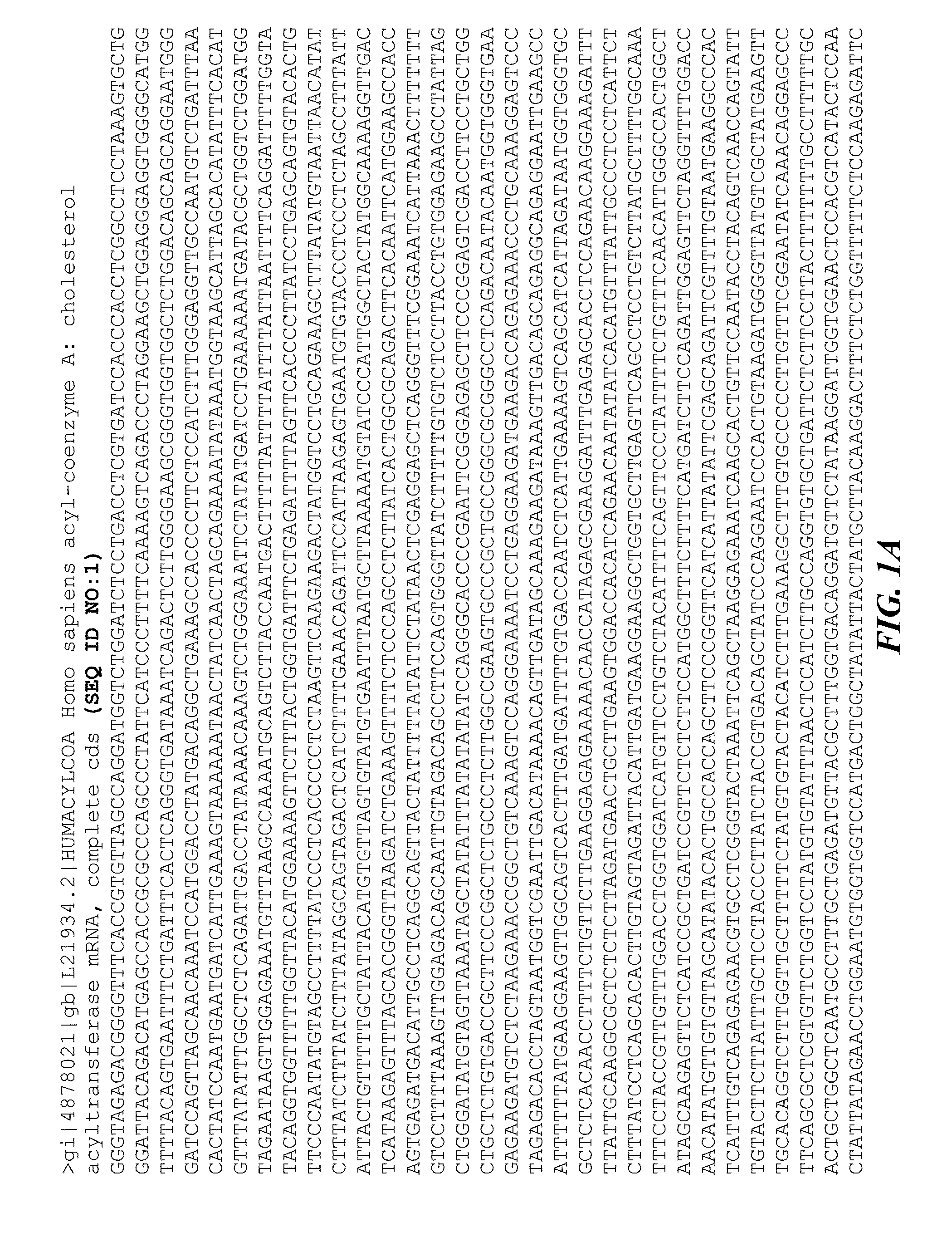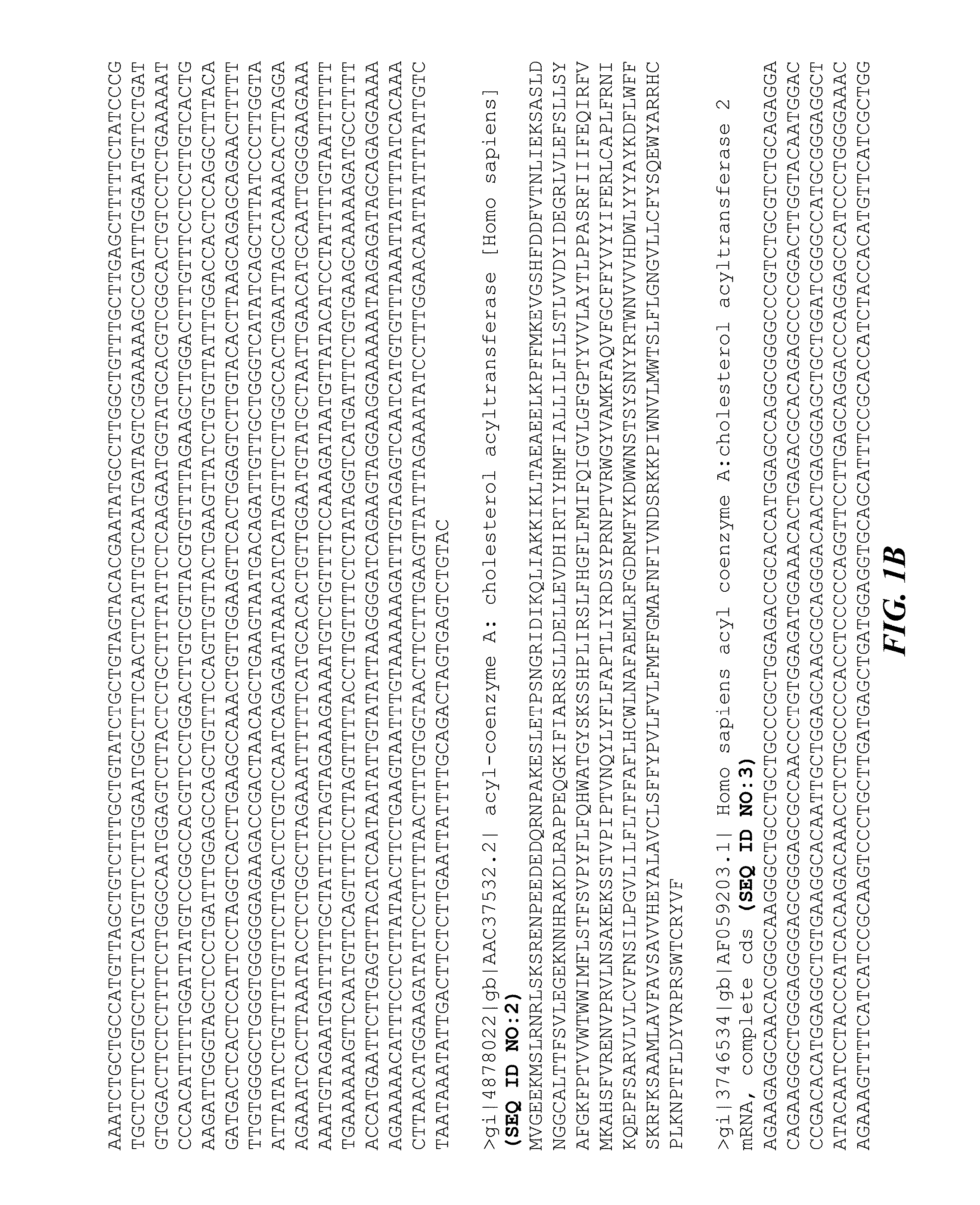Treating disorders associated with aberrant adrenocortical cell behavior
adrenocortical cell behavior and aberrant technology, applied in the field of aberrant adrenocortical cell behavior treatment, can solve the problems of dismal prognosis of patients with advanced disease, weight gain, and noticeable body changes, and achieve the effect of reducing adrenocortical tumors and increasing hormone production
- Summary
- Abstract
- Description
- Claims
- Application Information
AI Technical Summary
Benefits of technology
Problems solved by technology
Method used
Image
Examples
example 1
ACAT 1 Inhibition
[0150]Human ACAT1 activity was measured as described by Lada et al., 2004, J. Lipid Res. 45:378-386. AC29 cells (a Chinese hamster ovary cell-derived cell line) lack any endogenous ACAT1 activity and were used as the recipient cell line for these experiments (Cadigan et al., 1988, J. Biol. Chem. 263:274-282). Stable transfectants expressing recombinant human ACAT1 or ACAT2 genes encoding a polypeptide sequence of Genbank Accession # AAC37532.2 (SEQ ID NO:2) or Genbank Accession #AAC63998.1 (SEQ ID NO:3), respectively were created as described in Lada et al. (supra). Cells were maintained in monolayer at 37° C. in 5% CO2 in Ham's F-12 medium supplemented with 1% Eagle's vitamins, penicillin (100 units / ml), streptomycin (100 μg / ml), and 10% heat-inactivated fetal bovine serum, and cells were typically grown to 70-90% confluence for all experiments.
[0151]Human ACAT1 activity was assessed using a fluorescent cell-based assay as described in Lada et al. (supra). The assa...
example 2
Reduction of Steroid Biosynthesis
[0152]The test agent formulation(s) and appropriate vehicle controls are administered by oral (gavage) to beagle dogs for 14 consecutive days. The dose level, formulation, volume, route, and frequency of administration are appropriate for the test compound. Blood is collected from all animals on Day −3, and all surviving animals on Days 1, 3, 7, 8, 10, and 14. 5 micrograms / kg (not to exceed 250 micrograms) of CORTROSYN™ (also known as cosyntropin or synthetic ACTH) are administered via bolus IV at approximately the same time each morning. Blood samples are collected pre-dose and 1 hour post-ACTH-dose at approximately the same time each morning (±1 hour from the Day 1 collection times), including Day −3. After coagulation, serum is harvested and frozen (−50 to −90° C.) until analysis.
[0153]Samples are analyzed by ELISA using Canine Cortisol Quantitative ELISA Kit (Endocrine Technologies, Cat. # ERK-C2003) for the measurement of cortisol in canine seru...
example 3
Reduction of Cortisol Biosynthesis
[0155]The test agent formulation(s) and appropriate vehicle controls are administered by oral (gavage) to beagle dogs for 14 consecutive days. The dose level, formulation, and volume and route of administration are appropriate for the test compound. Blood is collected from all animals on Day −3, and all surviving animals on Days 1, 3, 7, 8, 10, and 14. Samples are collected at approximately the same time each morning (±1 hour from the Day 1 collection times), including Day −3. After coagulation, serum is harvested and frozen (−50 to −90° C.) until analysis.
[0156]ACTH levels are determined by radioimmunoassay. The radioimmunoassay (RIA) for the detection of ACTH in canine plasma is based on a ligand-binding assay and is provided as a kit from MP Biomedicals, LLC (Catalog #07106102). Reagents, antibodies, controls, 125I-ACTH are reconstituted according to kit instructions and stored appropriately. All tubes, samples, and reagents are maintained on ice...
PUM
| Property | Measurement | Unit |
|---|---|---|
| Molar density | aaaaa | aaaaa |
| Molar density | aaaaa | aaaaa |
| Molar density | aaaaa | aaaaa |
Abstract
Description
Claims
Application Information
 Login to View More
Login to View More - R&D
- Intellectual Property
- Life Sciences
- Materials
- Tech Scout
- Unparalleled Data Quality
- Higher Quality Content
- 60% Fewer Hallucinations
Browse by: Latest US Patents, China's latest patents, Technical Efficacy Thesaurus, Application Domain, Technology Topic, Popular Technical Reports.
© 2025 PatSnap. All rights reserved.Legal|Privacy policy|Modern Slavery Act Transparency Statement|Sitemap|About US| Contact US: help@patsnap.com



